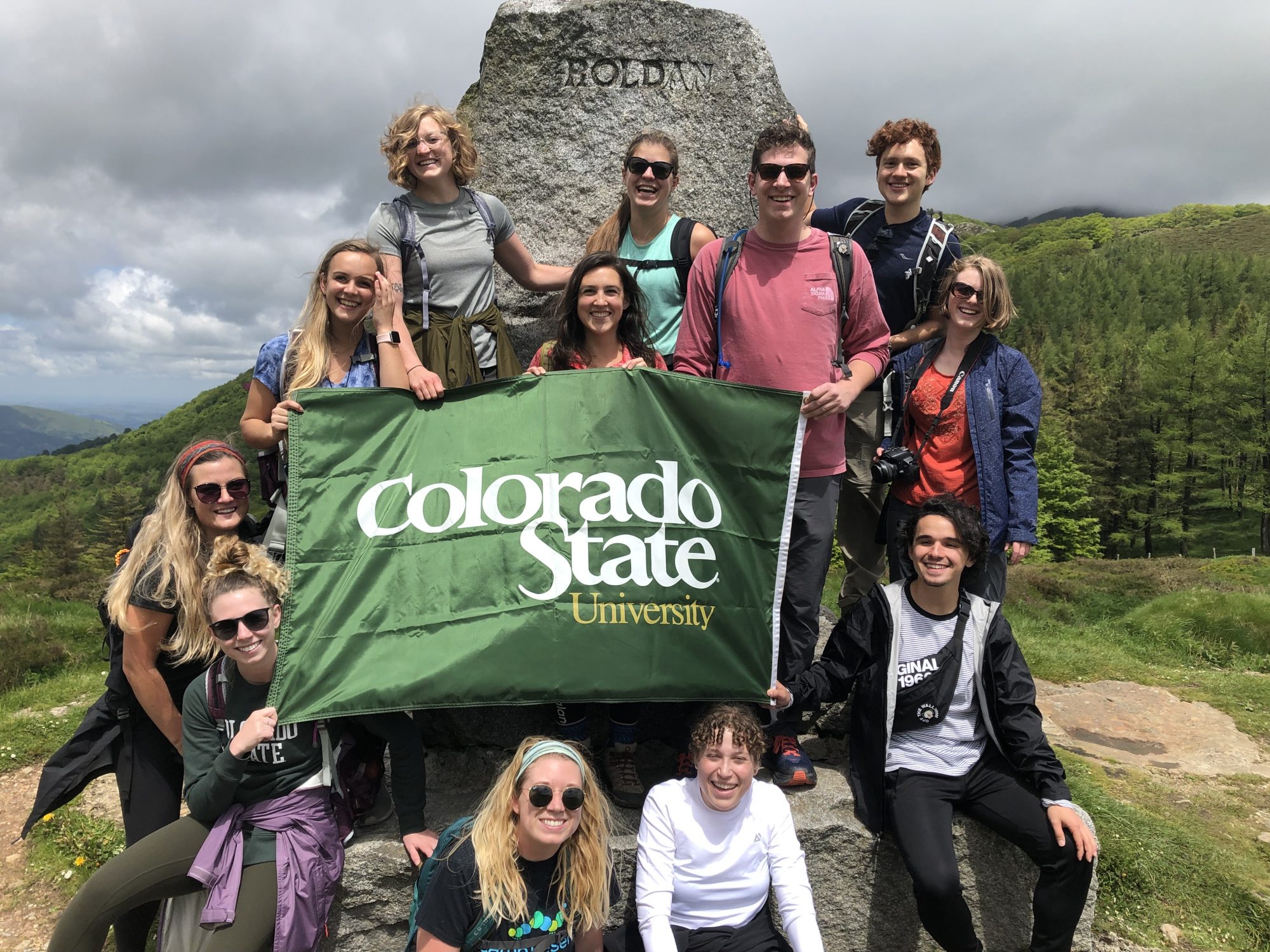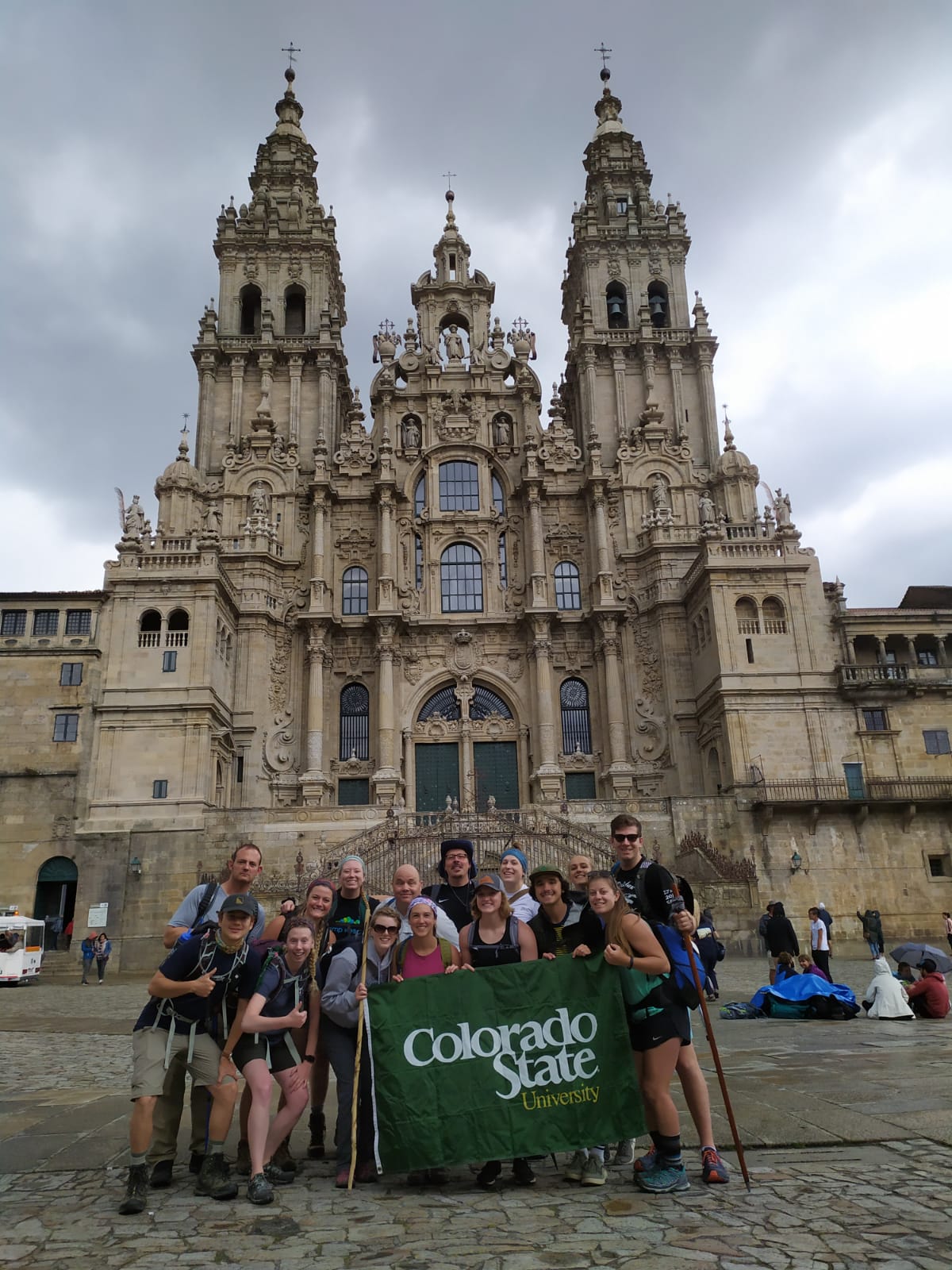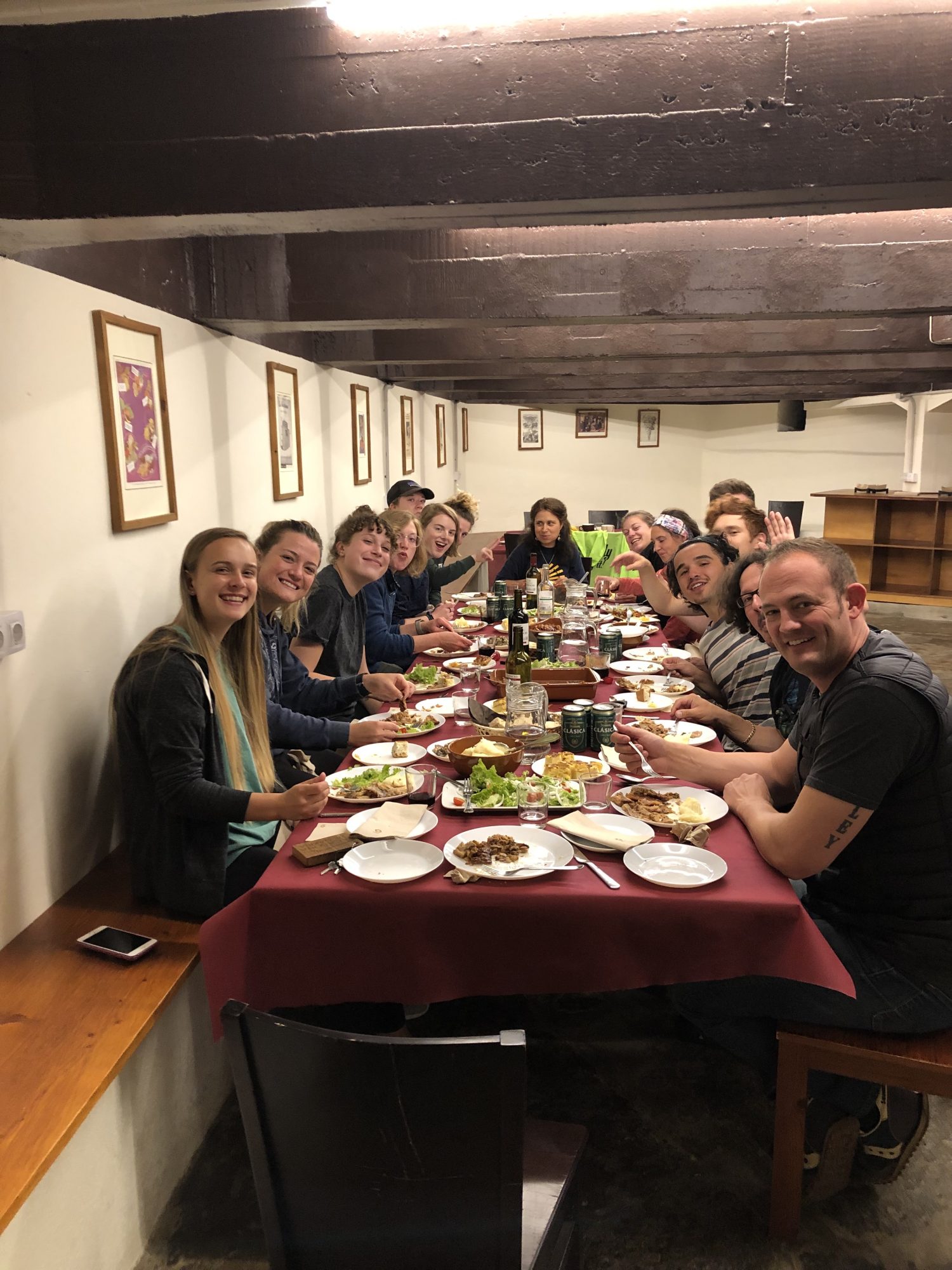Photos by Micah Plender and Jonathan Carlyon
A summer study abroad program is immersing CSU students in a language and a culture through a centuries-old pilgrimage in northern Spain.
The Camino de Santiago pilgrimage, also called the “Way of St. James,” dates back to the Middle Ages and is a route that begins near Spain’s northern border with France. It was used by Christians to pay homage to St. James, whose remains are buried in Santiago de Compostela, a city on the west coast of Spain that is the endpoint of the journey.
Thirteen students took the four-week “Camino Abroad” course in late May and early June 2019. The first week of the course is spent at CSU, researching and reading about the history of the area, and the final three weeks are spent walking sections of the Camino and visiting historic sites between the Pyrenees Mountains and Santiago de Compostela. Students who participated say the immersive experience in a Spanish-speaking country can’t be duplicated in a classroom setting.
“It forced me to adapt and not switch to English when I didn’t know a word,” said Micah Plender, who graduated with a degree in Spanish in December. “I developed a lot of confidence in the language and my ability to use it on the fly. It was a good reminder that the skills you learn in the classroom are transferrable to the real world. Not having the pressure of the classroom almost frees you to experience moments without worrying about grades.”

Slowing down
Jonathan Carlyon and Antonio Pedrós-Gascón, the two faculty members in the Department of Languages, Literatures and Cultures who lead the trip, say that walking the Camino is a striking departure from a student's typical lifestyle.
“When you walk, you see more, because it forces you to slow down in this fast-paced world of smartphones and social media,” Carlyon said. “Students tap into something that they don’t get to experience very often. You’re tired and sweaty; you’re not sitting in your room at the Marriott. You meet people in a way that’s different, raw, and honest.”
Carlyon, who along with Pedrós-Gascón has walked significant portions of the Camino and has taught classes on it for five years, says the meaning of the pilgrimage varies, depending on who is walking it.
There are three official reasons documented by the Archdiocese of Santiago de Compostela for doing the pilgrimage today: religious, cultural, and sport.
“The religious component, in medieval times, was highlighted whenever the faithful Catholics walked from France to Santiago de Compostela in reparation for their sins or for those of their community,” Carlyon said. “However, from the very beginning, this route was also used for trade and, especially, for immigration from Christian Europe to what was then considered ‘pagan’ Spain. This migration coincided with major 9th-century church reforms, led by the Benedictines in the Abbey of Cluny. Benedictines migrated to Spain and displaced the Mozarabic clergy. So, during the medieval period, the pilgrimage meant different things for different people.”
For many, it is a cultural tourism experience.
Plender said one highlight was walking the last stretch of the Camino with a local guide who had done it 67 times.
“Watching her interact with her friends along the Camino for six days was so great,” she said.

Alumnus/donor joins in
Matt Shoup got his Spanish degree from CSU in 2003, and about 12 years ago, he established a scholarship fund in the department for study abroad trips to Spain. Shoup, who founded M&E Painting and runs a number of other businesses, accompanied the faculty and students on this year’s “Camino Abroad” trip.
“It has been a dream of mine for a long time to walk the Camino, and it was great to spend time with the students,” he said, noting that this year’s recipient of his scholarship went on the trip as well. “You’re just trekking all day, and it’s a throwback to the basic human function of walking. Having no cell service and no car simplifies things. All you need is in your backpack.”
Carlyon and Pedrós-Gascón say the Camino has a rich, diverse cultural history that can be experienced in the buildings, the art, and the cuisine.
“Hypothetically,” Carlyon said, “if you were to dig down one foot, you’d see traces of Christianity from the Reconquest period until today; two feet, Islamic Spain from the early 8th century; three feet, traces of Rome, whose generals arrived in 200 B.C. and stayed until the fall of the Empire; and four feet, the pre-Romans, the indigenous inhabitants of the peninsula.”
“A cathedral in Zaragoza is pre-Roman architecture at the bottom and Baroque at the top,” Pedrós-Gascón added. “When students see a building that has been standing for 2,000 years, it affects your sense of place.”
There are even Celtic and Jewish influences.
“Spain was called Sepharad by its earliest Jewish inhabitants, and Jewish descendants of this region are referred to as Sephardic Jews,” Carlyon explained. “They were expelled by the Catholic Kings in 1492. Spain recently completed a period of repatriation for any person who could show his or her Sephardic Spanish heritage.”
“For me, the Camino is an amazing way of understanding the multicultural nature of the nation; to see the past in a different way,” Pedrós-Gascón said. “As I explain to my students, North American culture is always looking forward. Everything is a tribute to modernity, to a brighter future, while Europeans tend to walk around in the constant presence of the past, for better or worse.”
Transformative
It can be very transformative for students to be outside their comfort zone, Pedrós-Gascón explained. He is from Aragón, a region in northeastern Spain that the Camino passes through, and he is an expert on literature from the region of Galicia, which is where the Camino ends at Santiago de Compostela. He has published extensively about Galician author Suso de Toro, whom the students got to meet in Santiago.
“There’s nothing quite like being immersed,” added fourth-year student Richie Dow, who's majoring in apparel and merchandising with a Spanish minor. “It inevitably pushes you over the edge, and you get this incredible opportunity to improve your skills. It doesn’t really hit home until you get back and you say, ‘Wow, I did that.’”
Those who walk the final 100 kilometers of the Camino receive a “Compostela,” a certificate of completion from the Archdiocese of Santiago. One student whose family hails from the Aragón region brought an Aragón flag home to his dad, and it made his father weep. After the trip, Pedrós-Gascón invites all of the students to his house to teach them how to prepare “tortillas de patata,” a favorite breakfast dish served in northern Spain.
“By the end, we were all super-good friends, and I stay in touch with four or five of them regularly,” Plender said.
“We become like a little family,” Carlyon added.

